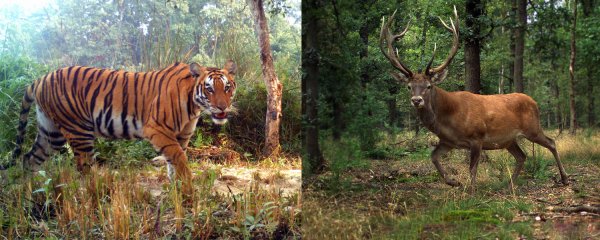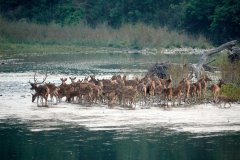Consistent patterns of common species across tropical tree communities
Cooper, Declan L.M.
,
Lewis, Simon L.
,
Sullivan, Martin J.P.
,
Prado, Paulo I.
,
ter Steege, Hans
,
Barbier, Nicolas
,
Slik, Ferry
,
Sonké, Bonaventure
,
Ewango, Corneille E.N.
,
Adu-Bredu, Stephen
,
Affum-Baffoe, Kofi
,
de Aguiar, Daniel P.P.
,
Ahuite Reategui, Manuel Augusto
,
Aiba, Shin Ichiro
,
Albuquerque, Bianca Weiss
,
de Almeida Matos, Francisca Dionízia
,
Alonso, Alfonso
,
Amani, Christian A.
,
do Amaral, Dário Dantas
,
do Amaral, Iêda Leão
,
Andrade, Ana
,
de Andrade Miranda, Ires Paula
,
Angoboy, Ilondea B.
,
Araujo-Murakami, Alejandro
,
Arboleda, Nicolás Castaño
,
Arroyo, Luzmila
,
Ashton, Peter
,
Aymard C, Gerardo A.
,
Baider, Cláudia
,
Baker, Timothy R.
,
Balinga, Michael Philippe Bessike
,
Balslev, Henrik
,
Banin, Lindsay F.
,
Bánki, Olaf S.
,
Baraloto, Chris
,
Barbosa, Edelcilio Marques
,
Barbosa, Flávia Rodrigues
,
Barlow, Jos
,
Bastin, Jean Francois
,
Beeckman, Hans
,
Begne, Serge
,
Bengone, Natacha Nssi
,
Berenguer, Erika
,
Berry, Nicholas
,
Bitariho, Robert
,
Boeckx, Pascal
,
Bogaert, Jan
,
Bonyoma, Bernard
,
Boundja, Patrick
,
Bourland, Nils
,
Boyemba Bosela, Faustin
,
Brambach, Fabian
,
Brienen, Roel
,
Burslem, David F.R.P.
,
Campelo, Wegliane
,
Cano, Angela
,
Cárdenas, Sasha
,
Cárdenas López, Dairon
,
de Sá Carpanedo, Rainiellen
,
Carrero Márquez, Yrma Andreina
,
Carvalho, Fernanda Antunes
,
Casas, Luisa Fernanda
,
Castellanos, Hernán
,
Castilho, Carolina V.
,
Cerón, Carlos
,
Chapman, Colin A.
,
Chave, Jerome
,
Chhang, Phourin
,
Chutipong, Wanlop
,
Chuyong, George B.
,
Cintra, Bruno Barçante Ladvocat
,
Clark, Connie J.
,
Coelho de Souza, Fernanda
,
Comiskey, James A.
,
Coomes, David A.
,
Cornejo Valverde, Fernando
,
Correa, Diego F.
,
Costa, Flávia R.C.
,
Costa, Janaina Barbosa Pedrosa
,
Couteron, Pierre
,
Culmsee, Heike
,
Cuni-Sanchez, Aida
,
Dallmeier, Francisco
,
Damasco, Gabriel
,
Dauby, Gilles
,
Dávila, Nállarett
,
Dávila Doza, Hilda Paulette
,
De Alban, Jose Don T.
,
de Assis, Rafael L.
,
De Canniere, Charles
,
De Haulleville, Thales
,
de Jesus Veiga Carim, Marcelo
,
Demarchi, Layon O.
,
Dexter, Kyle G.
,
Di Fiore, Anthony
,
Din, Hazimah Haji Mohammad
,
Disney, Mathias I.
,
Djiofack, Brice Yannick
,
Djuikouo, Marie Noël K.
,
Do, Tran Van
,
Doucet, Jean Louis
,
Draper, Freddie C.
,
Droissart, Vincent
,
Duivenvoorden, Joost F.
,
Engel, Julien
,
Estienne, Vittoria
,
Farfan-Rios, William
,
Fauset, Sophie
,
Feeley, Kenneth J.
,
Feitosa, Yuri Oliveira
,
Feldpausch, Ted R.
,
Ferreira, Cid
,
Ferreira, Joice
,
Ferreira, Leandro Valle
,
Fletcher, Christine D.
,
Flores, Bernardo Monteiro
,
Fofanah, Alusine
,
Foli, Ernest G.
,
Fonty, Émile
,
Fredriksson, Gabriella M.
,
Fuentes, Alfredo
,
Galbraith, David
,
Gallardo Gonzales, George Pepe
,
Garcia-Cabrera, Karina
,
García-Villacorta, Roosevelt
,
Gomes, Vitor H.F.
,
Gómez, Ricardo Zárate
,
Gonzales, Therany
,
Gribel, Rogerio
,
Guedes, Marcelino Carneiro
,
Guevara, Juan Ernesto
,
Hakeem, Khalid Rehman
,
Hall, Jefferson S.
,
Hamer, Keith C.
,
Hamilton, Alan C.
,
Harris, David J.
,
Harrison, Rhett D.
,
Hart, Terese B.
,
Hector, Andy
,
Henkel, Terry W.
,
Herbohn, John
,
Hockemba, Mireille B.N.
,
Hoffman, Bruce
,
Holmgren, Milena
,
Honorio Coronado, Euridice N.
,
Huamantupa-Chuquimaco, Isau
,
Hubau, Wannes
,
Imai, Nobuo
,
Irume, Mariana Victória
,
Jansen, Patrick A.
,
Jeffery, Kathryn J.
,
Jimenez, Eliana M.
,
Jucker, Tommaso
,
Junqueira, André Braga
,
Kalamandeen, Michelle
,
Kamdem, Narcisse G.
,
Kartawinata, Kuswata
,
Kasongo Yakusu, Emmanuel
,
Katembo, John M.
,
Kearsley, Elizabeth
,
Kenfack, David
,
Kessler, Michael
,
Khaing, Thiri Toe
,
Killeen, Timothy J.
,
Kitayama, Kanehiro
,
Klitgaard, Bente
,
Labrière, Nicolas
,
Laumonier, Yves
,
Laurance, Susan G.W.
,
Laurance, William F.
,
Laurent, Félix
,
Le, Tinh Cong
,
Le, Trai Trong
,
Leal, Miguel E.
,
Leão de Moraes Novo, Evlyn Márcia
,
Levesley, Aurora
,
Libalah, Moses B.
,
Licona, Juan Carlos
,
de Andrade Lima Filho, Diógenes
,
Lindsell, Jeremy A.
,
Lopes, Aline
,
Lopes, Maria Aparecida
,
Lovett, Jon C.
,
Lowe, Richard
,
Lozada, José Rafael
,
Lu, Xinghui
,
Luambua, Nestor K.
,
Luize, Bruno Garcia
,
Maas, Paul
,
Magalhães, José Leonardo Lima
,
Magnusson, William E.
,
Mahayani, Ni Putu Diana
,
Makana, Jean Remy
,
Malhi, Yadvinder
,
Maniguaje Rincón, Lorena
,
Mansor, Asyraf
,
Manzatto, Angelo Gilberto
,
Marimon, Beatriz S.
,
Marimon-Junior, Ben Hur
,
Marshall, Andrew R.
,
Martins, Maria Pires
,
Mbayu, Faustin M.
,
de Medeiros, Marcelo Brilhante
,
Mesones, Italo
,
Metali, Faizah
,
Mihindou, Vianet
,
Millet, Jerome
,
Milliken, William
,
Mogollón, Hugo F.
,
Molino, Jean François
,
Mohd. Said, Mohd Nizam
,
Monteagudo Mendoza, Abel
,
Montero, Juan Carlos
,
Moore, Sam
,
Mostacedo, Bonifacio
,
Mozombite Pinto, Linder Felipe
,
Mukul, Sharif Ahmed
,
Munishi, Pantaleo K.T.
,
Nagamasu, Hidetoshi
,
Nascimento, Henrique Eduardo Mendonça
,
Nascimento, Marcelo Trindade
,
Neill, David
,
Nilus, Reuben
,
Noronha, Janaína Costa
,
Nsenga, Laurent
,
Núñez Vargas, Percy
,
Ojo, Lucas
,
Oliveira, Alexandre A.
,
de Oliveira, Edmar Almeida
,
Ondo, Fidèle Evouna
,
Palacios Cuenca, Walter
,
Pansini, Susamar
,
Pansonato, Marcelo Petratti
,
Paredes, Marcos Ríos
,
Paudel, Ekananda
,
Pauletto, Daniela
,
Pearson, Richard G.
,
Pena, José Luis Marcelo
,
Pennington, R.T.
,
Peres, Carlos A.
,
Permana, Andrea
,
Petronelli, Pascal
,
Peñuela Mora, Maria Cristina
,
Phillips, Juan Fernando
,
Phillips, Oliver L.
,
Pickavance, Georgia
,
Piedade, Maria Teresa Fernandez
,
Pitman, Nigel C.A.
,
Ploton, Pierre
,
Popelier, Andreas
,
Poulsen, John R.
,
Prieto, Adriana
,
Primack, Richard B.
,
Priyadi, Hari
,
Qie, Lan
,
Quaresma, Adriano Costa
,
de Queiroz, Helder Lima
,
Ramirez-Angulo, Hirma
,
Ramos, José Ferreira
,
Reis, Neidiane Farias Costa
,
Reitsma, Jan
,
Revilla, Juan David Cardenas
,
Riutta, Terhi
,
Rivas-Torres, Gonzalo
,
Robiansyah, Iyan
,
Rocha, Maira
,
de Jesus Rodrigues, Domingos
,
Rodriguez-Ronderos, Elizabeth
,
Rovero, Francesco
,
Rozak, Andes H.
,
Rudas, Agustín
,
Rutishauser, Ervan
,
Sabatier, Daniel
,
Sagang, Le Bienfaiteur
,
Sampaio, Adeilza Felipe
,
Samsoedin, Ismayadi
,
Satdichanh, Manichanh
,
Schietti, Juliana
,
Schöngart, Jochen
,
Scudeller, Veridiana Vizoni
,
Seuaturien, Naret
,
Sheil, Douglas
,
Sierra, Rodrigo
,
Silman, Miles R.
,
Silva, Thiago Sanna Freire
,
da Silva Guimarães, José Renan
,
Simo-Droissart, Murielle
,
Simon, Marcelo Fragomeni
,
Sist, Plinio
,
Sousa, Thaiane R.
,
de Sousa Farias, Emanuelle
,
de Souza Coelho, Luiz
,
Spracklen, Dominick V.
,
Stas, Suzanne M.
,
Steinmetz, Robert
,
Stevenson, Pablo R.
,
Stropp, Juliana
,
Sukri, Rahayu S.
,
Sunderland, Terry C.H.
,
Suzuki, Eizi
,
Swaine, Michael D.
,
Tang, Jianwei
,
Taplin, James
,
Taylor, David M.
,
Tello, J.S.
,
Terborgh, John
,
Texier, Nicolas
,
Theilade, Ida
,
Thomas, Duncan W.
,
Thomas, Raquel
,
Thomas, Sean C.
,
Tirado, Milton
,
Toirambe, Benjamin
,
de Toledo, José Julio
,
Tomlinson, Kyle W.
,
Torres-Lezama, Armando
,
Tran, Hieu Dang
,
Tshibamba Mukendi, John
,
Tumaneng, Roven D.
,
Umaña, Maria Natalia
,
Umunay, Peter M.
,
Urrego Giraldo, Ligia Estela
,
Valderrama Sandoval, Elvis H.
,
Valenzuela Gamarra, Luis
,
van Andel, Tinde R.
,
van de Bult, Martin
,
van de Pol, Jaqueline
,
van der Heijden, Geertje
,
Vasquez, Rodolfo
,
Vela, César I.A.
,
Venticinque, Eduardo Martins
,
Verbeeck, Hans
,
Veridiano, Rizza Karen A.
,
Vicentini, Alberto
,
Vieira, Ima Célia Guimarães
,
Vilanova Torre, Emilio
,
Villarroel, Daniel
,
Villa Zegarra, Boris Eduardo
,
Vleminckx, Jason
,
von Hildebrand, Patricio
,
Vos, Vincent Antoine
,
Vriesendorp, Corine
,
Webb, Edward L.
,
White, Lee J.T.
,
Wich, Serge
,
Wittmann, Florian
,
Zagt, Roderick
,
Zang, Runguo
,
Zartman, Charles Eugene
,
Zemagho, Lise
,
Zent, Egleé L.
,
Zent, Stanford
(2024)
Nature (2024), Volume: 625, Issue: 7996 - ISSN 0028-0836 - p. 728-734.




